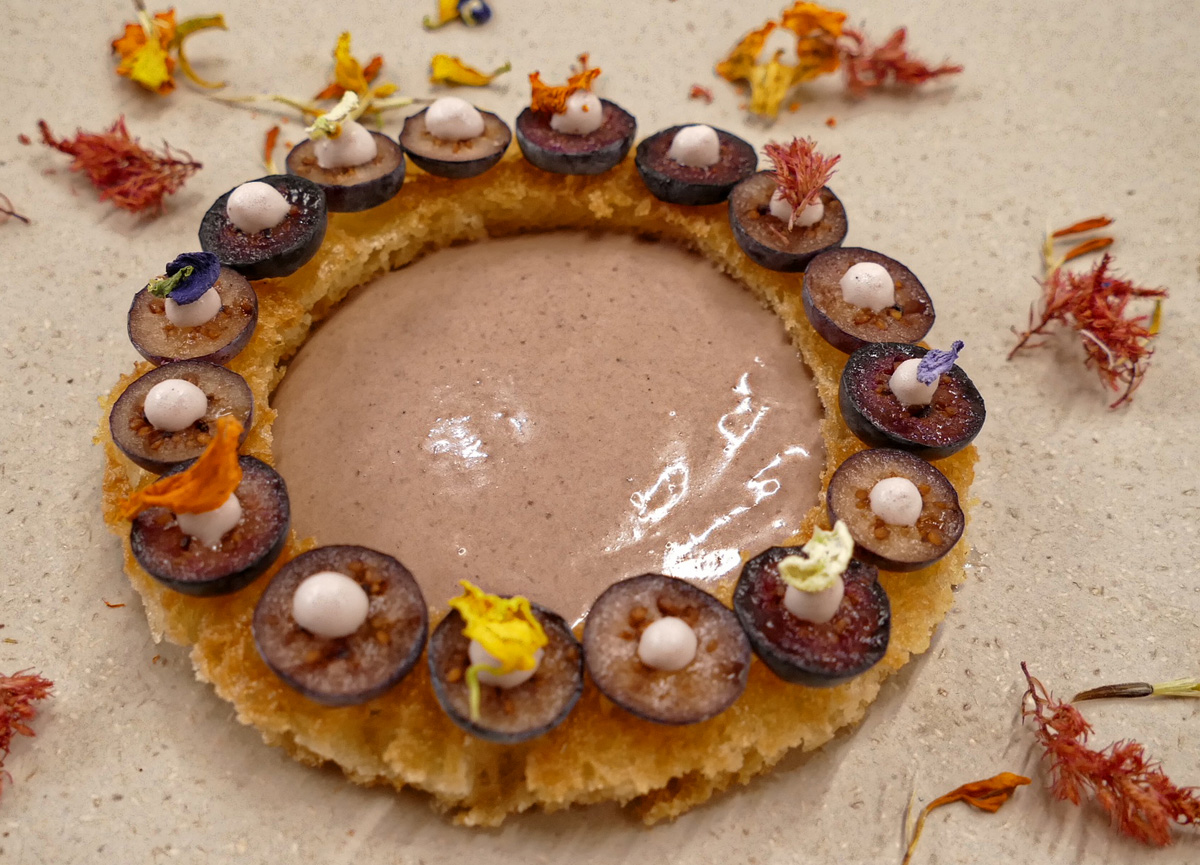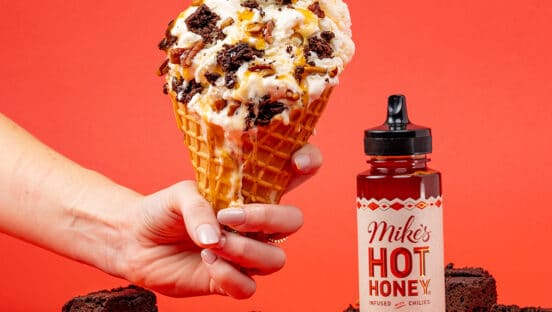Sponsored by the U.S. Highbush Blueberry Council.
Blueberries are often associated with breakfast and dessert dishes, but savory applications are gaining momentum. The U.S. Highbush Blueberry Council recently challenged Chicago chefs to create modern takes on this classic ingredient, to the delight of windy city foodies. Here’s the second of our three-part series on the winning recipes.
Before opening Brightbox Kitchen in the Loop, Chef Kolter Livengood honed his skills in some of Chicago’s most notable fine dining establishments. Using these skills, he took home runner-up honors for his out-of-the-box savory application featuring chicken liver mousse, fermented blueberry creme fraiche, and even edible flowers. We spoke with Livengood about the inspiration behind the recipe.
1. What inspired your winning creation?
I wanted to use blueberries in ways I hadn’t tried before. One of my favorite bites of food is the chicken liver toast at Rolf and Daughters in Nashville—it’s always served with seasonal fermented fruit—that’s where I got familiar with acidic preparation of blueberries to balance a dish out.
2. The flavor pairings in your recipe are incredible, and almost difficult to imagine. Can you talk us through how the flavors of the ingredients complement each other?
Great cooking can be deceptively simple, but it’s always balanced with a main component—in this recipe, liver. It’s astringent and can be very bitter if you don’t treat it correctly. If the liver is fatty, it’s obviously going to need salt and a little sweetness to cover the bitterness. Making the liver taste good was the beginning of balancing the flavors of the dish, along with the acidity and freshness from the black pepper which was spritzed on the flowers. The crème fraiche is acidic even though it’s fat, so it lightens the way it coats your palate.
3. Pickling is such a unique technique with blueberries. What process did you use?
When it comes to fragile foods like berries, you have to quick pickle them. Even a small amount of acid, sugar, or salt can break them down and turn them into mush. For my recipe, I cut the ripe blueberries, laid them out in a flat layer, and then used a spritzer to coat them with blueberry vinegar for about half an hour.
4. The sliced blueberries are a beautiful presentation, as many consumers do not see blueberries served that way. Is this something you’d consider for larger-scale productions?
This presentation requires extremely sharp knives and precision, so isn’t practical for large scale production—but you could easily cut the blueberries in half for line production as well. They’d still be just as eye-catching.
5. What did you find were the culinary challenges and culinary benefits of working with blueberries?
One thing that is good about blueberries is that they are a very portion-controlled product. If a chef is just starting out, learning about food costs, and wanting to experiment—blueberries are a smart choice. They’re consistent for size, flavor, and appearance, and they keep their vibrant color.
Also, because they are delicate, I always repackage them into something that’s more airtight with something like a folded paper towel inside of it to absorb moisture. If you need to use them fast, make a blueberry compote or jelly, or you could get creative and dehydrate or ferment them – then they will last forever in a jar.
6. What advice or tips would you give chefs considering adding blueberries into savory items?
Don’t just trust your own palate—have your sous chefs and customers taste, too. Blueberries can bring a hint of sweetness that highlights other ingredients in the recipe, but it’s all about balance. Getting a varied taste test of your dish is key.
7. With Brightwok Kitchen’s menu highlighting Asian-inspired fare, do you have any tips or ideas on pairing blueberries with Asian or other regional cuisines?
I’m introducing a fruit cup with coconut crema and blueberries on the menu soon. It sounds simple, but blueberries are one of few things that are perfect just the way they are.
By Davina van Buren













